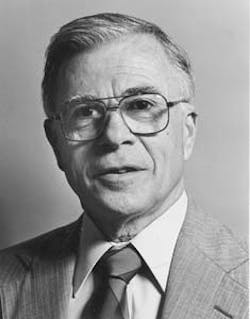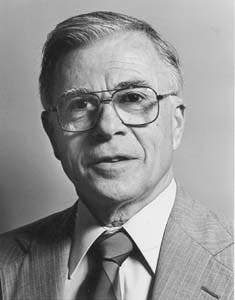THE ORIGIN OF RADIOMETRIC ANOMALIES IN PETROLEUM BASINS-A PROPOSED MECHANISM
Jerome G. Morse, Robert Zinke
Colorado School of Mines
Golden, Colo.
Radiometric mapping as a petroleum exploration tool began some seven decades ago.1 The results reported have predominantly been positive.
Nevertheless, the method lacks broad acceptance, due in part to insufficient understanding of its technical basis. In this article, we address the geochemistry and physics that underlie radiometrics.
The authors and others have observed repeatedly that the anomalously low radiation flux detected over petroleum basins correlates with existing subsurface hydrocarbon accumulations. (Sources are cited later in the text.)
Two primary factors drive this technique:
- The earth is inherently radioactive and
- Subsurface hydrocarbon deposits markedly alter surface radiation patterns.
The earth's crust contains uranium, thorium, and potassium, primordial radionuclides randomly laid down during the planet's formation. These radioelements and their progeny (decay products) emit highly energetic gamma rays in the course of radioactive decay. With their half-lives approximating the age of the earth, it is not unexpected that all three elements contribute measurably to our natural radiation background.
Uranium is the most mobile of the troika. Subsurface hydrocarbons, however, through recognized geochemical processes, terminate uranium's mobility in zones that lie above hydrocarbon accumulations. By doing so, these processes reduce uranium's contribution to the gamma radiation flux detected over hydrocarbon deposits. Further, they change the expected random radiation pattern into a nonrandom low-radiation configuration, creating a readily identifiable pathfinder in potentially productive basins.
Thus, the goal of radiometrics exploration is to search for such nonrandom low radiation patterns over petroliferous terrane. Other explorationists share this view.
Pirson2 found "halos" of high radiation in petroleum basins in Texas and elsewhere, noting that each halo contoured definable regions of lower gamma flux. By drilling in these radiation anomalies, he reported finding hydrocarbons.
In 1973 a growing interest in this technique motivated the U.S. Bureau of Mines to issue Information Circular 8579, a document that examined 237 published articles in which gamma radiation measurements played a key role in locating oil and gas.3 More than 85% of these authors described positive findings of varying degrees. The results reported in the circular strongly suggest that this exploration tool merits further testing.
Sunmark Exploration used radiometrics extensively when exploring for petroleum in Florida, Mississippi, Oklahoma, Wyoming, etc. The company, drilling only within defined radiation lows, reported an unusually high success rate in its paper at an annual Southern Methodist University conference titled "Unconventional Methods in Exploration for Petroleum and Natural Gas."4
Several models explaining radiometrics have already been described. Armstrong and Heemstra3 and Saunders et al.,5 for example, propose that deep-seated hydrocarbon pools provide the sources of radionuclides and their progeny. Their concepts require transporting radionuclides by formation fluids from pool depth along hypothetical pathways up to the surface. Relatively high gamma emissions encircle the halo; "lows" exist within halo boundaries.
Klusman6 outlined his perspectives on the geochemical basis of hydrocarbon exploration as follows: "The near-surface change of redox (reduction/oxidation) and pH conditions, in response to light hydrocarbon microseepage and its microbial oxidation, drives a localized redistribution of trace and radioelements. This localized vertical redistribution of trace and radioelements in the soil column is favored by this author as the cause of (surface) radiation and trace element anomalies reported in the literature."
Drilling success notwithstanding, more extensive use of this tool awaits better understanding of how the system works. The model described here derives from our earlier field work and our more recent analysis of collected data.7 8 9 10 11
The model disagrees with that proposed by Armstrong et al. and strengthens that detailed by Klusman.
NEW RADIOMETRIC MODEL
GAMMA RAY EMISSION SOURCES
Some billions of years ago, uranium, thorium, and potassium were laid down randomly in the crust during the earth's formation. The three, whose abundances range upwards to several parts per million, have half-lives of the order of billions of years.
- Hundreds of millions of years after the deposition of radionuclides, hydrocarbon deposits formed.
- Gamma rays emanating from the earth's surface originate only in relatively shallow soils and sediments and, as will be shown, not from within deep hydrocarbon pools.
- Uranium deposits form as follows: In its hexavalent (UVI) or fully oxidized state, the uranium ion is water-soluble, highly mobile, and easily transported by ground water. On entering a reducing environment, such as one containing organic matter, the ion is reduced, becoming tetravalent (UIV), insoluble, and immobile.12
- Of the three radionuclides, only potassium (K-40) emits energetic gamma rays directly; uranium (U-238) and thorium (Th-232) also do so, but indirectly. Decay by the latter two releases alpha particles, radiations that are difficult to measure quantitatively in the field. On further decay, they produce gamma ray emitting progeny as shown below.
Uranium and thorium initiate individual radioactive decay series, chains in which all but the final decay product are radioactive, i.e., one radioelement decays to form another, and so forth, except for the final one which is no longer radioactive.
Each series was deliberately truncated here to highlight bismuth-214 and thalium-208, the primary sources of gamma rays. Bi-214's gamma ray energy is 1.76 million electron volts (MeV); that of Tl-208 is 2.62 MeV.
uranium-238 (U-238) --- radium-226 (Ra-226) - radon-222 (Rn-222) - bismuth (Bi-214)
thorium-232 (Th-232) --- radium-224 (Ra-224) - radon-220 (Rn-220) -- thalium-208 (Tl-208)
The element radon is a chemically inert, highly mobile radioactive gas, and the only gas formed in each series. Although radon appears in each decay series, the two isotopes are not identical. Each of the two produces its own gamma-emitting radionuclide. Despite such similarities, their difference lies in their half lives, a fact central to our model.
The mobility of radon in soil is controlled by several factors: in-situ meteorological parameters (i.e., pressure, temperature, and moisture, access to physical pathways, but mainly by its half life.13 Contrasting radon half lives shows Rn-222 (from uranium) at 3.8 days, or more than 5,000 times longer than that of Rn-220 (from thorium), whose half-life is 55 sec. When equal quantities of each radionuclide diffuse through dry soil under identical atmospheric conditions, the average travel distance of Rn-222 is approximately 100 cm, whereas that of Rn-220 is only 1 cm, a hundred-fold difference in diffusion lengths.14
The variance in diffusion lengths is critical in assessing uranium's and thorium's contributions to surface gamma flux. Two other important considerations are: their relative abundance and specific activities (the quantity of radioactivity per gram of element). Although thorium's relative abundance in the crust may be as much as four times greater than that of uranium,15 the specific activity of uranium is greater by at least a factor of two than either that of potassium or thorium.15 16 Thus for the same quantity of radioactivity thorium must be 50 times closer to the surface than uranium in order for the two radons to contribute equally to the gamma flux.
HYDROCARBONS AND RADIOACTIVITY
About 50 years ago Laubmeyer in Germany introduced the term "vertical migration" to describe upward movements of subsurface fluids. His hypothesis has gained wide acceptance with many exploration methods basing their rationale on it. Included are surface geochemistry, electrical prospecting, and radiometrics. Laubmeyer's concept is explained as follows:
Pressure increases rapidly with depth. A gas at high pressure, given the opportunity, will quickly expand into regions of lower pressure, such as that found at the earth's surface. When the gas is a low molecular weight hydrocarbon, its leakage through the surface is generally detectable, supporting the concept of vertical migration. Originating within either dome-type reservoirs or stratigraphic traps, these gases reach the surface via microseeps. Local meteorology, i.e., surface barometric pressure, moisture, and temperature, also controls the ability of a gas to travel.
With the passage of time, low molecular weight hydrocarbons migrating upward from petroleum reservoirs to the surface, induce chemically-reducing changes in zones overlying the accumulations. Thus, the local subsurface environment be converted from either oxidizing or neutral to reducing in character.
When oxidized uranium (UVI) enters chemically-reduced zones, the radionuclide becomes immobile UIV, its upward movement ceases, and its concentration, particularly near the surface, is lowered to below what it would have been with no hydrocarbons present. In the same manner, uranium attempting transit into a chemically-reducing zone will precipitate at the zone's boundaries, forming the halo reported by Pirson.
For this reason, uranium's contribution to the surface radiation flux found over petroleum deposits, as shown in Fig. 1,(94649 bytes) can be expected to be less than that found over hydrocarbon-barren areas.
Thorium and potassium also travel to the surface via microseeps and add to surface radiation, but these radioelements generally remain unaffected by subsurface redox reactions. Unlike uranium, they are less mobile. Rn-220's considerably shorter half life, however, contributes to the surface flux only when its parent, Th-232, decays in relatively close proximity to that surface. Otherwise it offers little to surface radiation. Rn-222 travels about 100 times farther than Rn-220, making it easier to reach the surface from greater depths.
SUMMARY
When subsurface hydrocarbons are absent, uranium's intrinsic migratory ability, its greater specific radioactivity, and Rn-222's longer transit ability, cause it to be a most significant contributor to radiation detected at the surface.
When hydrocarbons are present, however, geochemical interactions constrain or arrest uranium's movement, causing the decrease in gamma flux detected over petroleum deposits. And such low radiation flux patterns are distinguishable from the random gammas observed in areas barren of hydrocarbons.
REFERENCES
- U.S. Bureau of Mines, Radiometric exploration for oil (translated from a Russian paper), USBM Circular 6072,1928, pp. 13-18.
- Pirson, S.j., Geological, geophysical, and geochemical modifications of sediments in the environment of oilfields, SMU Symposium 1 on Unconventional Methods in Exploration for Petroleum and Natural Gas, 1969, Dallas.
- Armstrong, F.E., and Heemstra, R.J., Radiation halos and hydrocarbon reservoirs: a review, U.S. Bureau of Mines Information Circular 8579, 1973.
- Weart, R.C., and Heimberg, G., Exploration radiometrics post survey drilling results, SMU Symposium II on Unconventional Methods in Exploration for Petroleum and Natural Gas, 1981, Dallas.
- Saunders, D.F., Burson, K.R., Brown, J.J., and Thompson, C.K., Combined geological and surface geochemical methods discovered Agaritta and Brady Creek fields, Concho County, Tex., AAPG Bull., Vol. 77, No. 7, July 1993, pp. 1,221 2, 1,239.
- Klusman, R.W., Soil gas and related methods for natural resource exploration, John Wiley & Sons, New York, 1993, pp. 201-211.
- Morse, J.G., Rana, M.H., and Morse, L., Radon mapping as indicators of subsurface oil and gas, OGJ, May 10, 1982, pp. 227-246.
- Morse, J.G., and Rana, M.H., New perspectives on radiometric exploration for oil and gas, OGJ, June 6, 1983, pp. 87-90.
- Morse, J.G., and Alewine, J.W., Airborne radiometrics: case study of Patrick Draw field, Wyo., OGJ, Nov. 28, 1983, pp. 145-147.
- Morse, J.G., Rana, M.H., and Alewine, Exploration radiometrics for petroleum hydrocarbons, The Mines Magazine, Colo. School of Mines, March 1984, pp. 13-15.
- Morse, J.G., Improving the quality of radiometric data, OGJ, Oct. 16, 1989, pp. 88-89.
- Bailey, R.V., and Childers, M.O., Applied mineral exploration with special reference to uranium, Westview Press, Boulder, Colo., 1977, p. 125.
- Otten, J.K., Gunderson, L.C.S., and Schumann, R.R., The geology of radon, U.S. Geological Survey, Denver, 1993.
- Tanner, A.B., Radon migration in the ground: a review, in The natural radiation environment, Adams, J., and Lowder, W., University of Chicago Press, 1964, p. 175.
- International Atomic Energy Agency, Gamma ray surveys in uranium exploration, IAEA Technical Reports Series No. 186, Vienna, Austria, 1969, pp. 5-6.
- Public Health Service, Radiological Health Handbook, PHS, Revised Edition, 1970, p. 104.

